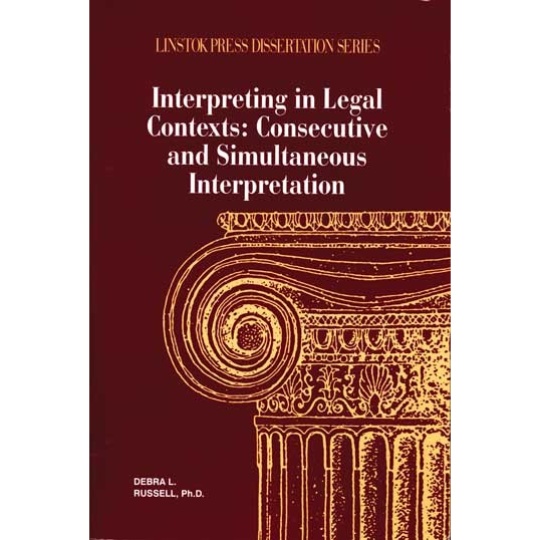Interpreting in Legal Contexts


Interpreting in Legal Contexts
SKU #B859 IN STOCK
Retail Price: $22.95Save $4.59
$18.36
QTY
Lowest price, guaranteed
- Overview
- Additional Details
- Accessories
- Q&A
- Customer Reviews
- Manual
This study emphasizes that interpreters must know how and when to use simultaneous and consecutive interpreting in the courtroom in order to fully include Deaf people in the judicial process. Interviews with lawyers, judges, expert witnesses and Deaf people themselves give an insight into the needs and misconceptions of all parties involved in the legal process. It points out how interpreter education programs and professional associations must evaluate their programs to insure that interpreters are receiving the appropriate training in the use of consecutive and simultaneous interpreting necessary for legal environments. [Debra L. Russell, Ph.D.; (2002) 256 pages; soft cover]
| Feature | Details | |
|---|---|---|
| Mfg part # | 0-932130-23-2 | |
| UPC | 9780932130232 | |
| Weight (lbs) | 0.83 | |
| Country of Manufacture | United States | |
| Author(s) | Debra L. Russell, Ph.D | |
| Deaf Author | No | |
| Publisher | Sign Media | |
| Publication Date | 2002 | |
| Media Type(s) Book CD-ROM DVD | Yes No No | |
| Cover Type | Paperback | |
| Pages | 256 | |
| Voice Over / Audio | No | |
| Captions | No | |
| Age(s) Baby Child Teen Adult | No No No Yes | |
| Earn CEUs | No | |
| ISBN | 0932130232 |
Customer Q&A
Get help from Diglo and other customers who purchased this. Ask a new question.
Ask a New Question
To pose a question, please log into your Diglo account or create a new account.
Customer Reviews
Real people with real opinions. Post your own review.
Post Your Own Review
To leave a review, please log into your Diglo account or create a new account.
Manual:
Back to top

